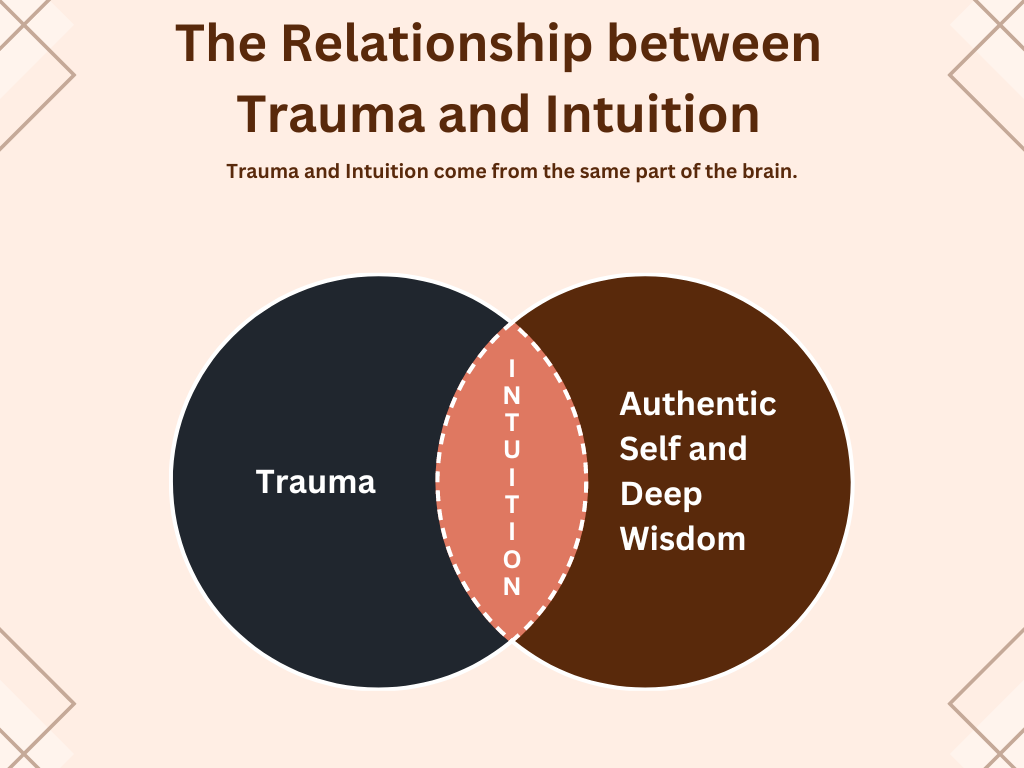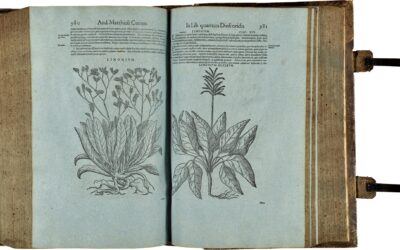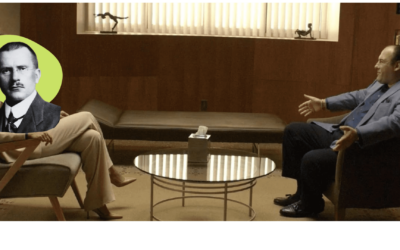The Relationship between Intuition and Trauma

Did you enjoy this article? Checkout the podcast here: https://gettherapybirmingham.podbean.com/
Many artists that have spoken to describe their process as “tuning into a radio wave”. One artist told me that she did not even know what she was making until it is all done. Many effective creatives explain that it does not feel like they create art. Instead it feels like their art is simply coming through them.
Joseph Campbell used to say that the artist swims in the ocean that the psychotic drowns in. Art, wisdom, intuition, and our unresolved trauma responses come from a place in our brain that is beneath our ego, cognitive, and conscious mind. Older psychoanalysts like Carl Jung called these places the unconscious mind. More recently research calls them “implicit memories” “secondary” and “tertiary” cognitive processes and “somatic memories”.
Intuition and trauma are both have their origin in the subcortical brain. The subcortical brain is the oldest part of the brain that stores information that we can only be partially conscious of. When we feel things the subcortical brain tells us we often call them hutches gut feelings or instincts. Until we deal with trauma we cannot live authentically or trust our intuition. When we are traumatized our gut reactions and changes in mood are problematic and untrustworthy.
For example: Maybe I should have a suspicion of someone that everyone else trusts. My intuition is telling me something that I need to pay attention to to be safe. If I have trauma that makes me unconsciously afraid of men or people who wear red shirts, I might think that this intuition is only a trauma response. Maybe it is a trauma response and I label my aversion to someone intuition when really I am only projecting my trauma response on to them. Until I heal trauma I don not know when to trust my gut reactions.
Intuition:
Intuition refers to the ability to understand or know something without conscious reasoning or evidence. It often manifests as a gut feeling or a sense of knowing that emerges spontaneously. While intuition is not fully understood, research suggests that it involves the integration of various cognitive processes and information stored in the brain.
The subcortical brain regions, particularly the amygdala and the basal ganglia, have been implicated in intuition. The amygdala plays a critical role in processing emotions and detecting potential threats or dangers in the environment. It can rapidly assess incoming sensory information and trigger intuitive responses, guiding our behavior based on previous experiences and emotional associations.
The basal ganglia, a group of structures involved in motor control and habit formation, also contribute to intuition. They are responsible for integrating information from different brain areas and facilitating quick, automated responses. The basal ganglia help us make intuitive decisions by combining learned patterns, previous experiences, and emotional signals.
Trauma:
Trauma refers to an emotional or psychological response to an overwhelmingly distressing event or experience. It can result in long-lasting effects on an individual’s mental and emotional well-being. Traumatic experiences can range from single incidents, such as accidents or assaults, to prolonged situations like abuse or warfare.
The subcortical regions, particularly the amygdala and the hippocampus, are heavily involved in the processing and storage of traumatic memories. The amygdala plays a crucial role in the initial emotional response to trauma, helping to encode fear and stress-related information. It also contributes to the development of hypervigilance, heightened emotional reactions, and the formation of fear-based associations with trauma-related stimuli.
The hippocampus, another subcortical structure, is responsible for memory formation and consolidation. During traumatic events, the stress response can impact the functioning of the hippocampus, potentially leading to memory impairments or fragmented recollection of the traumatic event. This can contribute to symptoms like flashbacks or difficulties in integrating the traumatic experience into a coherent narrative.
The Effects of Trauma:
While both intuition and trauma involve the subcortical brain regions, they arise from different mechanisms. Intuition relies on the integration of cognitive processes, emotional associations, epigenetic memories, and learned patterns, while trauma involves the processing and storage of unconscious distressing memories and emotional responses. Understanding these distinct processes can provide insight into how the brain functions in various contexts.
Trauma can have a significant impact on intuition and hinder access to our authentic selves. When a person experiences trauma, whether it be a single distressing event or ongoing adverse experiences, it can disrupt the normal functioning of the brain and create barriers to intuitive abilities. Here’s how trauma can block intuition and impede connection with our authentic selves:
Hyperarousal and Hypervigilance:
Trauma often leads to a heightened state of arousal and hypervigilance, where individuals are constantly on guard for potential threats. This chronic state of anxiety and vigilance can consume mental and emotional resources, making it difficult for intuitive signals to surface. The constant focus on survival and self-protection overshadows the subtler intuitive insights that arise when we are more relaxed and attuned to our internal wisdom.
Dissociation and Fragmentation:
Traumatic experiences can lead to dissociation, a defense mechanism in which individuals detach from their emotions, sensations, or even their sense of self. Dissociation can fragment the normal flow of thoughts and feelings, creating a disconnection from intuitive cues. When trauma remains unhealed, the dissociative response may persist, making it challenging to access and trust intuitive information.
Trust and Safety Issues:
Trauma can erode an individual’s trust in themselves, others, and the world around them. When trust is compromised, it becomes difficult to rely on one’s own intuition. The fear and uncertainty associated with trauma can lead to a constant questioning of one’s instincts and an inability to discern between genuine intuitive guidance and perceived threats.
Distorted Beliefs and Self-Perception:
Trauma can shape an individual’s beliefs about themselves, others, and the world. Negative self-perceptions, feelings of guilt, shame, or worthlessness can cloud intuition and distort one’s authentic self-expression. These distorted beliefs can create self-doubt, undermine confidence, and inhibit the ability to trust one’s intuitive insights.
Unprocessed Emotions and Traumatic Memories:
Traumatic experiences often involve overwhelming emotions that may remain unprocessed if not adequately addressed. Unresolved emotions can create internal turmoil and make it challenging to connect with intuition. Additionally, traumatic memories, particularly when fragmented or repressed, can disrupt the integration of past experiences, hindering the formation of coherent intuitive responses.
Healing Trauma:
Trauma responses and intuition both have connections to the unconscious or implicit memory, often influencing our thoughts, emotions, and behaviors without conscious awareness. Here’s an elaboration on how trauma responses and intuition originate from the unconscious or implicit memory, and why healing trauma is crucial for accessing our embodied wisdom and authentic self:
Trauma Responses and Unconscious Memory:
Traumatic experiences leave profound imprints on our unconscious memory systems. The unconscious mind stores information and experiences that may not be readily accessible to conscious awareness but can still impact us on various levels. Trauma-related memories, emotions, and sensory cues become embedded in the unconscious, shaping our reactions and behavior even when we’re not consciously aware of their influence.
Trauma responses, such as hypervigilance, avoidance, or emotional triggers, are often automatic and instinctive. They arise from the unconscious memory, triggered by sensory cues or reminders associated with the traumatic event. These responses can occur without conscious understanding or control, making them difficult to manage or modify until the underlying trauma is addressed.
Intuition and Unconscious Knowledge:
Intuition is closely linked to the unconscious or implicit knowledge we possess. It’s a form of knowing that arises without conscious reasoning or explicit awareness of how we acquired the information. Intuitive insights often stem from the integration of various cognitive processes, learned patterns, and emotional associations stored in the unconscious mind.
Our unconscious knowledge encompasses a vast range of experiences, observations, and memories that shape our intuition. It can include implicit learnings from past events, nonverbal cues, body language, and subtle signals that our conscious mind may overlook. Intuitive responses draw upon this rich reservoir of information, guiding us towards insights and decisions that may go beyond logical analysis.
Accessing Embodied Wisdom and Authentic Self:
Healing trauma is essential for accessing our embodied wisdom and authentic self because unhealed trauma can create barriers to trusting and embracing our intuitive responses. Trauma can fragment our sense of self, distort our beliefs, and erode our self-trust, making it challenging to access and rely on our intuitive guidance.
Unresolved trauma can perpetuate a state of hypervigilance, fear, and emotional reactivity, overpowering the quieter, intuitive voice within us. Trust in our intuition requires a sense of safety, self-assuredness, and inner calm that can be compromised by unhealed trauma. By addressing and healing trauma, we can gradually dismantle these barriers, restoring a sense of wholeness and trust in our intuitive abilities.
Paths to the Healing Trauma with Intuition
Now that we have access to QEEG brain mapping technology we can see what is going on in the brain instead of trying to diagnosis it from the outside. Conditions like CPTSD, childhood neglect ADHD and fibromyalgia look the same on a brain map. If a scan can see that these have a correlation on the inside of the brain, can we admit that they are related, perhaps causal conditions? This has validated the intuition of many trauma therapists who long suspected that trauma and PTSD were the fuel under the genetic expression of trauma.
Healing trauma allows us to integrate fragmented experiences, process unresolved emotions, and develop a healthier relationship with our unconscious and intuitive knowledge. It opens up space for the authentic self to emerge, fostering a deeper connection with our inner wisdom, values, and desires. By healing trauma, we clear the path to accessing and embracing our innate intuitive responses, leading to a more authentic and empowered way of being.
Healing trauma is a complex and individual journey, but it can pave the way for reclaiming intuition and reconnecting with one’s authentic self. Through trauma therapy, self-reflection, and supportive interventions, individuals can gradually address the barriers created by trauma, process the emotional wounds, and rebuild trust in themselves and their intuition. As healing progresses, intuitive abilities can reemerge, facilitating a deeper understanding of oneself and promoting a more authentic way of being in the world.
Without healing trauma it is hard to live an authentic life or be comfortable with vulnerability. Intuition is an important ingredient of a whole and actualized life. Clearing the confusion and misdirection caused by trauma can help us to wield intuition as an effective tool in our lives.
The Role of the Body in Intuition and Trauma
Our bodies hold immense wisdom and serve as gateways to our intuitive knowing. Trauma, however, can disrupt this connection, leaving us disconnected from our physical selves and the intuitive cues they offer. When we experience trauma, the body encodes these experiences into its very cells, muscles, and nervous system. Unresolved trauma can manifest as chronic tension, pain, or numbing, creating a disconnect from the present moment and our innate intuitive guidance.
Somatic approaches to healing trauma recognize the profound impact of trauma on the body and seek to release these physical imprints. Through practices like somatic experiencing, sensorimotor psychotherapy, and body-oriented psychotherapy, individuals can relearn to attune to their bodily sensations, release trapped emotions, and reconnect with the innate wisdom held within. As the body releases its traumatic holdings, intuitive signals can reemerge, often experienced as subtle sensations, gut feelings, or embodied knowings.
Cultivating body awareness and presence is key to accessing our intuitive wisdom. Practices like mindfulness, yoga, and breathwork can help us tune into the subtleties of our physical experience, allowing us to decipher the messages our bodies convey. When we are grounded in our bodies, we can more readily discern the intuitive nudges that guide us toward authentic choices and actions.
Cultural and Social Influences
Cultural norms, societal expectations, and oppressive systems can contribute to trauma and suppress intuitive expressions, particularly for marginalized communities. Intergenerational trauma, stemming from historical oppression, discrimination, and systemic marginalization, can shape intuitive patterns across generations.
In many cultures, intuitive ways of knowing have been devalued or suppressed in favor of more “rational” or “objective” modes of thinking. This can create an internalized disconnection from one’s intuitive wisdom, especially for those who have experienced marginalization or oppression based on their identities.
Furthermore, traumatic experiences related to oppression, such as racism, sexism, homophobia, or xenophobia, can create deep wounds that inhibit the expression of one’s authentic self and intuitive guidance. The constant need for vigilance and self-protection in the face of oppression can override the subtle voice of intuition.
Healing from these collective and cultural traumas requires acknowledging and addressing the systemic forces that perpetuate harm. It also involves reclaiming and celebrating intuitive ways of knowing that may have been suppressed or devalued. By creating spaces for diverse voices and perspectives, we can foster a deeper understanding of how trauma and intuition intersect with cultural and social realities.
Spirituality and Intuitive Development
For many individuals and cultures, the journey of healing trauma and reclaiming intuition is deeply intertwined with spirituality and spiritual practices. Various spiritual traditions offer frameworks for understanding and cultivating intuition, often viewing it as a sacred form of wisdom that transcends the rational mind.
Practices such as meditation, prayer, or ritual can create a space for quieting the mind and accessing a deeper state of presence and awareness. From this place of stillness, intuitive insights and guidance can arise more readily. Many spiritual traditions encourage the development of qualities like non-judgment, compassion, and letting go, which can facilitate the release of traumatic imprints and the integration of fragmented experiences.
Spiritual concepts like interconnectedness, divine guidance, or universal consciousness can provide a foundational belief that supports trusting one’s intuitive knowing. When individuals feel connected to something larger than themselves, they may be more inclined to listen to the subtle promptings of their intuition, viewing them as messages from a higher source or their authentic selves.
Additionally, spiritual communities can offer a supportive environment for individuals to explore and share their experiences of trauma healing and intuitive development. The collective wisdom and shared practices within these communities can provide a sense of validation and empowerment, fostering a deeper connection to one’s intuitive capacities.
Practical Exercises and Resources
To support the journey of healing trauma and reclaiming intuition, here are some practical exercises and resources:
Exercises:
- Body Scan Meditation: This mindfulness practice involves systematically bringing awareness to different parts of the body, noticing any sensations, tensions, or areas of holding without judgment. This can help cultivate body awareness and release traumatic imprints.
- Journaling: Setting aside time for reflective writing can help process emotions, gain insights, and explore intuitive guidance. Prompts like “What is my body trying to tell me?” or “What does my heart know to be true?” can facilitate intuitive expression.
- Creative Expression: Engaging in artistic pursuits like painting, dancing, or music can provide a channel for intuitive expression and release. The act of creation can bypass the analytical mind and allow intuitive wisdom to emerge.
- Nature Immersion: Spending time in nature can help quiet the mind and connect with a sense of stillness and presence. This can create an environment conducive to receiving intuitive insights and guidance.
Resources:
- Therapists and Healers: Seek out qualified professionals who specialize in trauma healing and integrate somatic, intuitive, or spiritual approaches in their work. Look for modalities like somatic experiencing, sensorimotor psychotherapy, or expressive arts therapy.
- Support Groups: Join local or online support groups focused on trauma recovery, intuitive development, or specific cultural or spiritual communities. Sharing experiences and gaining validation can be powerful.
- Books and Audiovisual Materials: Explore books, podcasts, or videos that explore the intersection of trauma, intuition, and embodied wisdom from various perspectives, including personal narratives and scientific research.
- Retreats and Workshops: Attend retreats, workshops, or immersive experiences that provide dedicated time and space for healing trauma, cultivating intuition, and exploring spiritual or creative practices.
Bibliography:
Levine, Peter A. “Waking the Tiger: Healing Trauma.” Berkeley, CA: North Atlantic Books, 1997.
Van der Kolk, Bessel. “The Body Keeps the Score: Brain, Mind, and Body in the Healing of Trauma.” New York: Viking, 2014.
Gendlin, Eugene T. “Focusing.” New York: Bantam Books, 1982.
Siegel, Daniel J. “The Mindful Brain: Reflection and Attunement in the Cultivation of Well-Being.” New York: W.W. Norton & Company, 2007.
Porges, Stephen W. “The Polyvagal Theory: Neurophysiological Foundations of Emotions, Attachment, Communication, and Self-Regulation.” New York: W.W. Norton & Company, 2011.
Rothschild, Babette. “The Body Remembers: The Psychophysiology of Trauma and Trauma Treatment.” New York: W.W. Norton & Company, 2000.
Suggested Reading for Continued Exploration:
- “The Intuitive Way” by Penney Peirce
- “Trauma and the Body” by Pat Ogden, Kekuni Minton, and Clare Pain
- “The Body Keeps the Score” by Bessel van der Kolk
- “The Intuitive Compass” by Francis Cholle
- “Waking the Tiger: Healing Trauma” by Peter A. Levine
- “The Body Deva” by Katie Sarra
- “The Untethered Soul” by Michael A. Singer
- “Intuition: Unleashed” by Dr. Judith Orloff
- “Somatic Experiencing” by Peter A. Levine
- “The Trauma Tool Kit” by Susan Pease Banitt
References:
- Levine, P. A. (2010). In an unspoken voice: How the body releases trauma and restores goodness. North Atlantic Books.
- Ogden, P., Minton, K., & Pain, C. (2006). Trauma and the body: A sensorimotor approach to psychotherapy. W. W. Norton & Company.
- Rothschild, B. (2017). The body remembers volume 2: Revolutionizing trauma treatment. W. W. Norton & Company.
- Siegel, D. J. (2010). Mindsight: The new science of personal transformation. Bantam Books.
- Van Der Kolk, B. (2015). The body keeps the score: Brain, mind, and body in the healing of trauma. Penguin Books.
- Dunn, B. D., Galton, H. C., Morgan, R., Evans, D., Oliver, C., Meyer, M., … & Dalgleish, T. (2010). Listening to your heart: How interoception shapes emotion experience and intuitive decision making. Psychological Science, 21(12), 1835-1844.
- Hodgkinson, G. P., Langan-Fox, J., & Sadler-Smith, E. (2008). Intuition: A fundamental bridging construct in the behavioural sciences. British Journal of Psychology, 99(1), 1-27.
Further Reading:
- Epstein, S. (2010). Demystifying intuition: What it is, what it does, and how it does it. Psychological Inquiry, 21(4), 295-312.
- Gendlin, E. T. (1982). Focusing. Bantam Books.
- Kolk, B. A., McFarlane, A. C., & Weisaeth, L. (Eds.). (2007). Traumatic stress: The effects of overwhelming experience on mind, body, and society. The Guilford Press.
- Levine, P. A. (1997). Waking the tiger: Healing trauma: The innate capacity to transform overwhelming experiences. North Atlantic Books.
- Myers, D. G. (2002). Intuition: Its powers and perils. Yale University Press.
- Ogden, P., & Fisher, J. (2015). Sensorimotor psychotherapy: Interventions for trauma and attachment. W. W. Norton & Company.
- Sadler-Smith, E. (2008). Inside intuition. Routledge.
- Scaer, R. C. (2014). The body bears the burden: Trauma, dissociation, and disease. Routledge.
- Sinclair, M. (2011). Handbook of intuition research. Edward Elgar Publishing.
- Van der Kolk, B. A. (1994). The body keeps the score: Memory and the evolving psychobiology of posttraumatic stress. Harvard Review of Psychiatry, 1(5), 253-265.























0 Comments